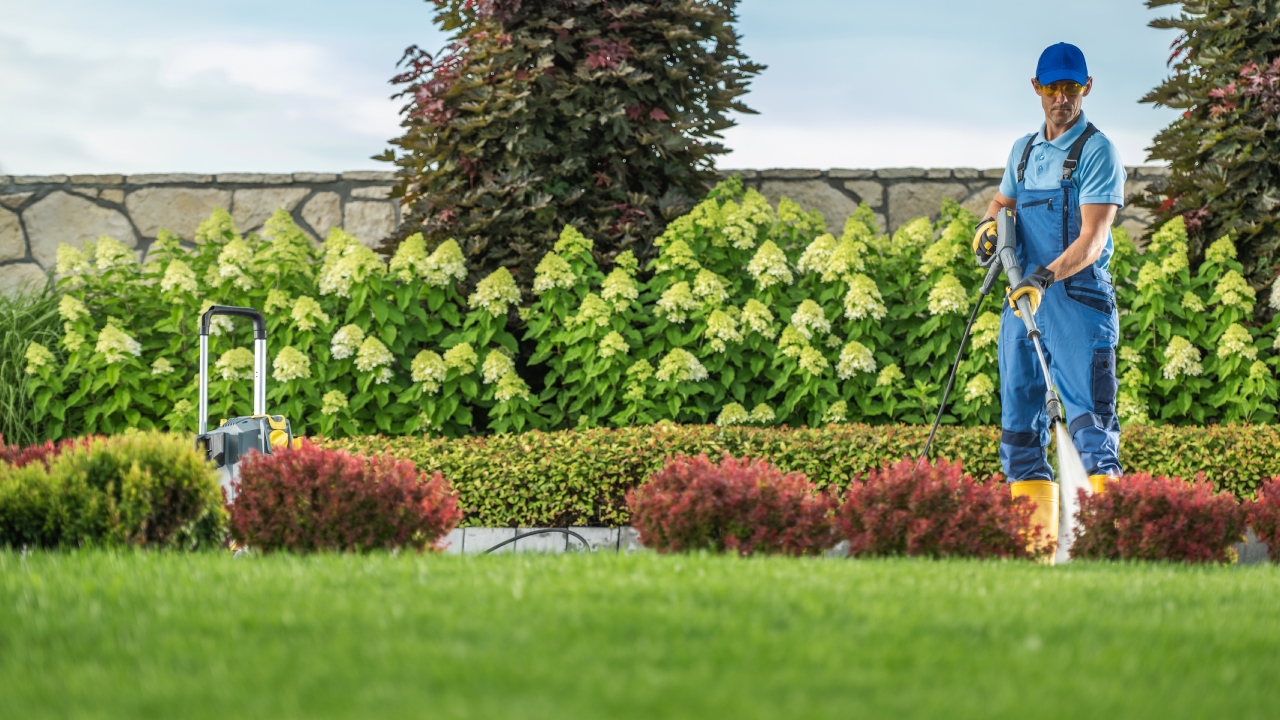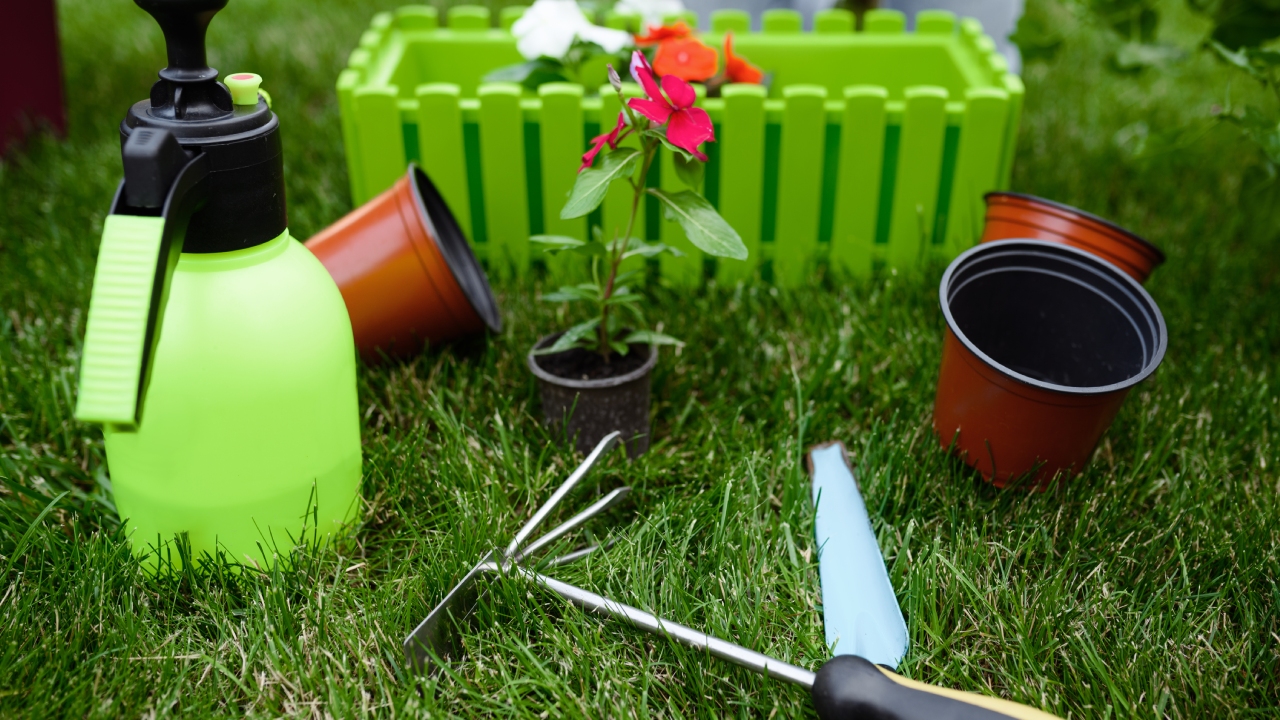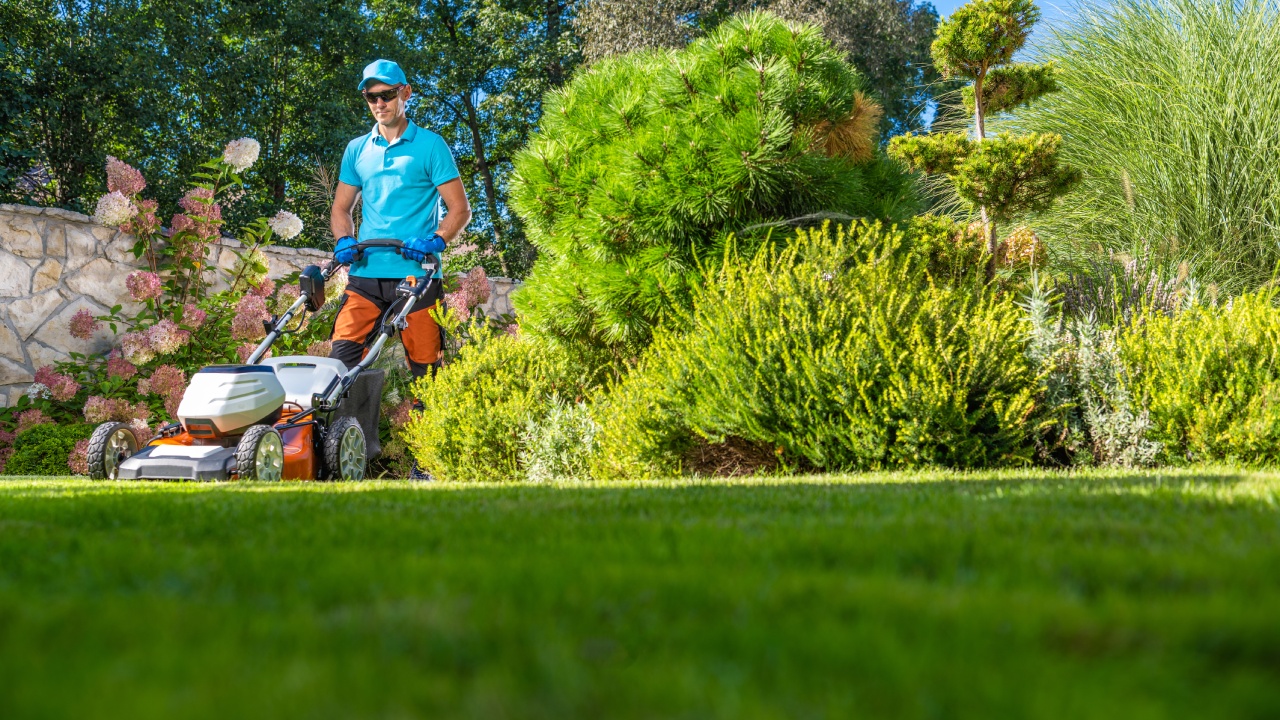Why Proper Plant Spacing Matters
Getting the spacing right for your plants isn’t just about making your yard look good—it’s about keeping your plants healthy and your home pest-free.
Keep Pests at Bay
Spacing your plants properly can be a game-changer when it comes to keeping pests out. When plants are too close together, they create a cozy, humid environment that pests love. By giving each plant enough room, you make your garden less inviting to these unwanted guests. For tips on how to space your plants, check out the “Florida-Friendly Landscaping™ Guide to Plant Selection and Landscape Design”.
| Plant Type | Recommended Spacing (inches) |
|---|---|
| Small Shrubs | 18 – 24 |
| Medium Shrubs | 24 – 36 |
| Large Shrubs | 36 – 48 |
| Trees | 120 – 180 |
Boost Plant Health
When plants have enough space, they can soak up more sunlight, water, and nutrients. This means they grow stronger and are less likely to get sick or be attacked by pests. Overcrowded plants end up fighting for these resources, which can stunt their growth and make them more vulnerable.
Good spacing also improves air circulation, which helps keep fungal diseases at bay. Healthy plants are better equipped to handle pests and tough weather conditions.
By following these spacing tips, you’ll not only make your yard look great but also create a healthier, more resilient garden.
For more tips on plant spacing and other gardening advice, visit the University of Florida IFAS Extension.
Why Pruning Matters
Pruning isn’t just about keeping your yard looking sharp; it’s a game-changer for the health and beauty of your garden. At Comprehensive Irrigation and Lawn Care, we’re all about pruning because it keeps pests at bay and stops your plants from turning into homewreckers.
Pruning to Keep Pests Away
Think of pruning as your garden’s personal bouncer. By chopping off dead or sick branches, you’re making it tough for pests to crash the party. Good pruning lets air and sunlight flood in, making your plants less inviting to bugs and other creepy crawlies.
| Benefits of Pruning | What It Does |
|---|---|
| Better Airflow | Cuts down on moisture, keeping mold away. |
| More Sunlight | Helps plants grow strong and healthy. |
| Pest Control | Kicks out pest hangouts, lowering infestation chances. |
If you want the nitty-gritty on pruning, check out the University of Florida IFAS Extension. They’ve got the lowdown on how to prune like a pro.
Keeping Your Home Safe
Pruning isn’t just about the plants; it’s about keeping your home safe too. By trimming trees and shrubs, you stop them from getting too close to your house. This means fewer branches scratching your windows or roots messing with your foundation.
Keeping a good distance between plants and your home makes your garden look great and keeps pests from using overgrown branches as a highway into your house.
| How Far Should They Be? | What to Do |
|---|---|
| Trees | Keep them at least 10 feet from your house. |
| Shrubs | Make sure they’re 5 feet away from buildings. |
| Vines | Don’t let them touch your house. |
For more tips on pruning, the University of Florida IFAS Extension has got you covered. Their advice will help you prune like a champ.
By making pruning a regular part of your lawn care, you’ll keep your garden looking awesome and your home safe from pests and plant damage.
Keep Your Lawn Pest-Free with Smart Sanitation
Keeping your lawn clean isn’t just about aesthetics—it’s about keeping pests at bay. A tidy yard can make a world of difference in preventing unwanted critters from setting up camp around your home.
Why a Clean Yard Matters
A clean yard is your first line of defense against pests. Regularly cleaning up fallen leaves, dead plants, and excess mulch can stop pests from finding a cozy spot to breed. The University of Florida IFAS Extension says that a consistent cleanup routine can significantly reduce the chances of pests invading your space.
Here are some simple yet effective practices to keep your yard in top shape:
- Clear Out Debris: Regularly pick up leaves, branches, and other organic matter that pests love to hide in.
- Dispose of Plant Waste Properly: Don’t just toss plant waste anywhere—make sure it’s disposed of in a way that won’t attract pests.
- Trim and Prune: Keep your plants trimmed and pruned to improve air circulation and reduce places for pests to hide.
- Clean Gutters and Downspouts: Make sure your gutters and downspouts are free of debris to prevent water buildup and pest breeding grounds.
Tools for Tackling Pests
To keep pests in check, consider using an Integrated Pest Management (IPM) approach. This strategy combines different methods to keep pests out and manage any that do get in. The University of Florida IFAS Extension recommends regular inspections and smart landscaping practices.
Here are some handy resources for pest management:
- Hire the Pros: Get licensed pest-control professionals to inspect your property and give expert advice.
- Use Barriers: Set up underground fences, gopher baskets, and metal barriers around plants to keep burrowing pests like voles, moles, and gophers at bay (Moxie Services).
- Set Traps and Cages: Use traps and cages to catch and remove pests effectively.
- Water Smartly: Use deep watering techniques to encourage deep-root growth and make your lawn more drought-resistant. Aim for about an inch of water per week, split into two or three sessions (Paradise Landscapes).
| Pest Management Tool | What It Does |
|---|---|
| Licensed Pest-Control Pros | Regular inspections and expert advice |
| Barriers | Keep burrowing pests out |
| Traps and Cages | Catch and remove pests |
| Smart Watering | Promote deep-root growth |
By keeping your yard clean and using these pest management tools, you can enjoy a healthy, beautiful lawn. Regular maintenance and smart pest prevention will keep your outdoor space thriving for years to come.
Integrated Pest Management Tips
Keeping your lawn healthy and looking sharp means keeping pests at bay. Integrated Pest Management (IPM) is your go-to strategy for doing just that. Let’s break it down into simple steps you can follow to keep those pesky critters out.
Keep Pests Out
First things first, stop pests from getting in. Proper plant spacing is key. If your plants are too close together, pests can easily hop from one to another and invade your space. Check out the Florida-Friendly Landscaping™ Guide to Plant Selection and Landscape Design for tips on how to space your plants right. This not only keeps pests away but also helps your plants thrive.
Pruning is another trick up your sleeve. Trim those trees and shrubs so they don’t touch your house. This simple step can prevent pests from using them as a bridge to get inside. The University of Florida IFAS Extension has more on this.
| Strategy | Action |
|---|---|
| Plant Spacing | Follow guidelines for plant height and spread |
| Pruning | Keep plants away from structures |
Regular Pest Checks
Don’t wait for pests to make themselves at home. Regular inspections are a must. Get a licensed pest-control pro to check your property often. They can spot problems early and nip them in the bud (University of Florida IFAS Extension).
Keeping your yard clean is also a big help. Remove debris and keep things tidy to make your space less inviting to pests (University of Florida IFAS Extension).
| Inspection Frequency | Professional Involvement |
|---|---|
| Regular | Licensed pest-control professionals |
By following these steps—keeping pests out and doing regular checks—you can keep your lawn looking great and pest-free.
Picking the Perfect Lawn Fertilizer
Keeping your lawn green and healthy starts with the right fertilizer. With so many choices out there, it can be tough to know which one to pick. Let’s break down the top five fertilizers and the differences between organic and synthetic options to help you make the best choice.
Top 5 Lawn Fertilizers
Here are five fertilizers that really stand out for their quality and effectiveness:
| Fertilizer | Type | Key Benefits |
|---|---|---|
| Milorganite Slow Release Nitrogen Lawn Fertilizer | Organic | Slow-release nitrogen, boosts soil health |
| Organic Lawn Food by Jonathan Green | Organic | Enriches soil, safe for pets and kids |
| Scotts Turf Builder Starter Food for New Grass | Synthetic | Strengthens roots, great for new lawns |
| Scotts Turf Builder Weed and Feed | Synthetic | Feeds lawn, fights weeds |
| Ironite Mineral Supplement/Fertilizer | Synthetic | Deepens green color, fixes nutrient deficiencies |
Sources: Earth Development Inc
Organic vs. Synthetic Fertilizers
Choosing between organic and synthetic fertilizers boils down to what you want for your lawn.
Organic Fertilizers
- Made from natural stuff like compost, manure, and bone meal.
- Improve soil health over time.
- Release nutrients slowly, so no worries about overdoing it.
- Safe for the environment, pets, and kids.
Synthetic Fertilizers
- Chemically made to give your lawn exactly what it needs.
- Work fast because nutrients are absorbed quickly.
- Need careful application to avoid over-fertilizing and harming the environment.
- Often cheaper and easy to find.
Sources: Earth Development Inc
Both types have their perks. Think about what your lawn needs, the soil condition, and your personal preferences when picking a fertilizer.
Getting the Dirt on Fertilizers
Taking care of your lawn can feel like a full-time job, but knowing your fertilizers can make it a whole lot easier. Let’s break down the basics of liquid vs. granular fertilizers and slow-release vs. quick-release fertilizers, so you can pick the best one for your yard.
Liquid vs. Granular Fertilizers
Liquid and granular fertilizers each have their own perks. Liquid fertilizers are like an energy drink for your grass—quick to absorb and fast-acting. You just spray them on, and boom, your lawn gets an instant nutrient boost (Home Depot). Granular fertilizers, on the other hand, are the slow and steady type. They come in pellet form and release nutrients over time, keeping your lawn fed for weeks (Earth Development Inc).
| Fertilizer Type | Release Speed | Application Method | Duration of Effect |
|---|---|---|---|
| Liquid | Fast | Sprayed | Immediate |
| Granular | Slow | Spread | 6-8 weeks |
Slow-Release vs. Quick-Release Fertilizers
Both slow-release and quick-release fertilizers have their own unique benefits. Slow-release fertilizers are like a steady diet for your lawn, providing nutrients over a long period, usually up to 12 weeks. This means you don’t have to reapply them as often (Home Depot). Quick-release fertilizers, however, are the go-to for a quick fix. They give your lawn an immediate nutrient boost, perfect for when your grass needs a quick pick-me-up or a fast green-up.
| Release Type | Nutrient Release Period | Reapplication Frequency | Ideal Usage |
|---|---|---|---|
| Slow-Release | 6-12 weeks | Less often | Consistent feeding |
| Quick-Release | Immediate | More often | Fast recovery |
Understanding these differences can help you choose the right fertilizer for your lawn’s needs. Whether you need a quick fix with liquid fertilizer or a long-term solution with granular, slow-release options, your lawn will thank you with lush, green growth.
Picking the Perfect Fertilizer for Your Lawn
Choosing the right fertilizer is like picking the right fuel for your car. Your lawn needs the right nutrients to look its best. Let’s break down what you need to know about grass types and soil nutrients.
What Your Grass Needs
Different grasses have different appetites. Knowing what your grass craves helps you pick the right fertilizer. Check out this cheat sheet:
| Grass Type | Nitrogen (N) | Phosphorus (P) | Potassium (K) |
|---|---|---|---|
| Bermuda | High | Medium | High |
| Kentucky Bluegrass | High | Low | Medium |
| St. Augustine | Medium | Medium | High |
| Zoysia | Medium | Low | Medium |
For example, Bermuda grass loves nitrogen and potassium but isn’t too picky about phosphorus. Kentucky Bluegrass, on the other hand, wants lots of nitrogen but not much phosphorus. Knowing these quirks helps you keep your lawn happy.
Testing Your Soil
Before you start sprinkling fertilizer, you need to know what’s already in your soil. A soil test tells you what nutrients are missing. Here’s how to do it:
- Grab Some Dirt: Take samples from different spots in your yard.
- Mail It In: Send your samples to a soil testing lab.
- Read the Report: Look at the nutrient levels and pH.
- Pick Your Fertilizer: Choose one that fills in the gaps.
If your soil is low on potassium, go for a fertilizer with a higher K value. If it’s already rich in phosphorus, pick one with less P. This way, you’re not overloading your lawn with stuff it doesn’t need.
Putting It All Together
By knowing your grass type and testing your soil, you can pick the perfect fertilizer. This ensures your lawn gets the right nutrients, making it lush and green.
For more tips, check out Earth Development Inc and Home Depot.
Lawn Mowing Tips That Actually Work
Keeping your lawn looking sharp isn’t rocket science, but it does take a bit of know-how. Follow these simple tips to keep your grass green and your neighbors green with envy.
When to Mow
How often you need to mow depends on the time of year and the weather. Here’s a quick cheat sheet:
| Season | How Often to Mow |
|---|---|
| Spring | Every 6-7 days |
| Summer | Every 4-6 days |
| Fall | Every 6 days, then every 8-9 days |
| Extreme Drought | Every 10 days |
In spring, your grass is growing like it’s on steroids, so you’ll need to mow every 6-7 days. Come summer, you might need to mow every 4-6 days, especially if it’s been raining or you’ve just fertilized (PowerPro Equipment). As fall rolls in and things cool down, you can start stretching it out to every 8-9 days before you pack it in for winter.
Know Your Grass
Different grasses have different needs. Here’s the lowdown:
| Grass Type | How Often to Mow | Best Height |
|---|---|---|
| Fescues | Every 6-7 days (Spring/Fall) | 2.5-3 inches |
| Bluegrass | Every 6-7 days (Spring/Fall) | 2-2.5 inches |
| Ryegrasses | Every 6-7 days (Spring/Fall) | 2-2.5 inches |
| Zoysia | Every 4-6 days (Summer) | 1-1.5 inches |
| Bermuda | Every 4-6 days (Summer) | 1-1.5 inches |
Cool-season grasses like fescues, bluegrass, and ryegrasses need a trim every 6-7 days in the spring and fall (The Spruce). Keep them at 2-3 inches tall. Warm-season grasses like Zoysia and Bermuda need more frequent mowing in the summer, about every 4-6 days, and should be kept shorter, around 1-1.5 inches.
Keep It Real
Stick to these guidelines, and you’ll have a lawn that’s the talk of the town. And if you need a little extra help, Comprehensive Irrigation and Lawn Care has got your back for all your lawn and irrigation needs.
Mowing Techniques for Healthy Lawns
Want a lawn that makes your neighbors green with envy? It’s all about how you mow. Let’s break down two key methods: the 1/3 Rule and Gradual Height Adjustments.
The 1/3 Rule for Mowing
The 1/3 Rule is like the golden rule of lawn care. Never cut more than one-third of the grass blade’s length in one go. Chop off too much, and you risk damaging the grass stems and roots. This can lead to weak roots, more weeds, and a sad-looking lawn (The Spruce).
| Grass Height Before Mowing | Maximum Cut Length | Remaining Grass Height |
|---|---|---|
| 3 inches | 1 inch | 2 inches |
| 4.5 inches | 1.5 inches | 3 inches |
| 6 inches | 2 inches | 4 inches |
Stick to the 1/3 Rule, and your lawn will stay thick and green. It helps the grass hold onto moisture, which is super important when the sun’s blazing and rain is scarce.
Gradual Height Adjustments
Got grass that’s gone wild? Don’t go all Edward Scissorhands on it. Mow it down gradually. Take off no more than one-third of the new growth at a time. This might mean a few passes with your mower, giving the grass time to bounce back between sessions (The Spruce).
| Initial Grass Height | First Mow | Second Mow | Third Mow | Ideal Height |
|---|---|---|---|---|
| 6 inches | 4 inches | 3 inches | 2 inches | 2 inches |
| 9 inches | 6 inches | 4 inches | 3 inches | 3 inches |
By easing the grass down to size, you keep it healthy and strong. This method reduces stress on the grass, encouraging steady growth and a lawn that can handle whatever Mother Nature throws at it.
Follow these mowing tips, and you’ll have a lawn that’s the talk of the block. For more personalized advice and top-notch lawn care services, trust Comprehensive Irrigation and Lawn Care. We’ve got your back for all your lawn and irrigation needs.












